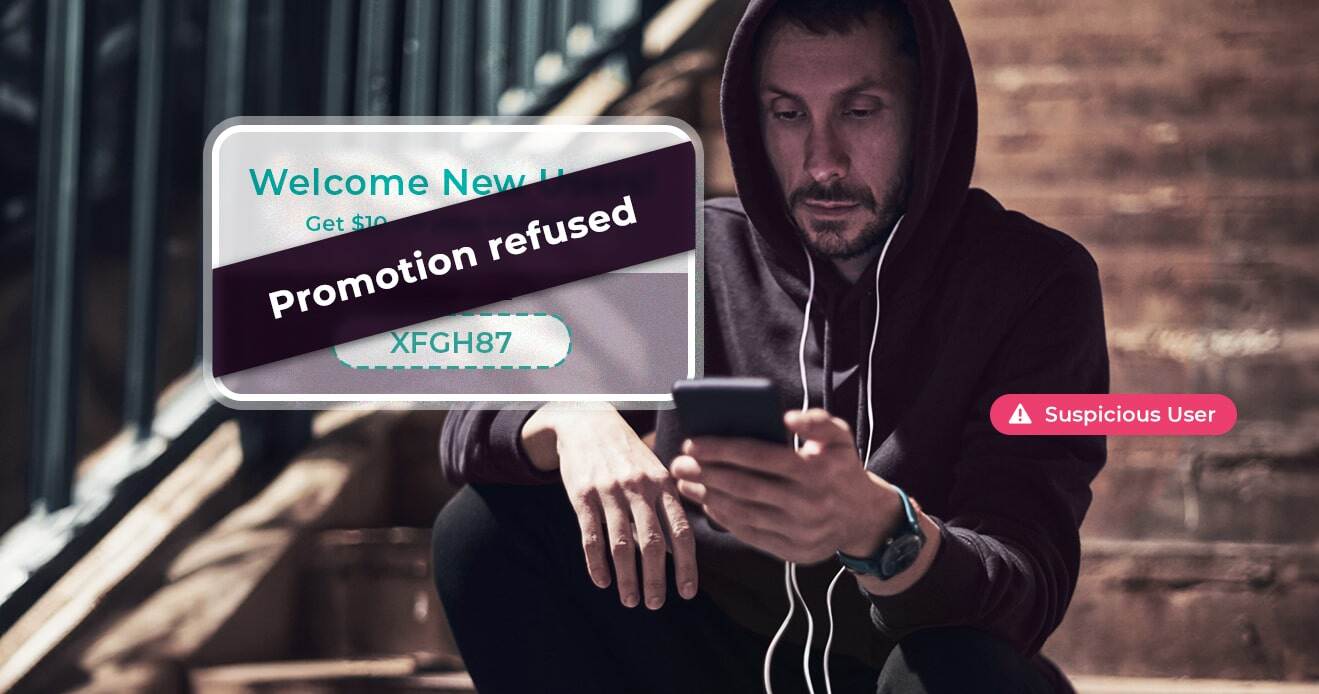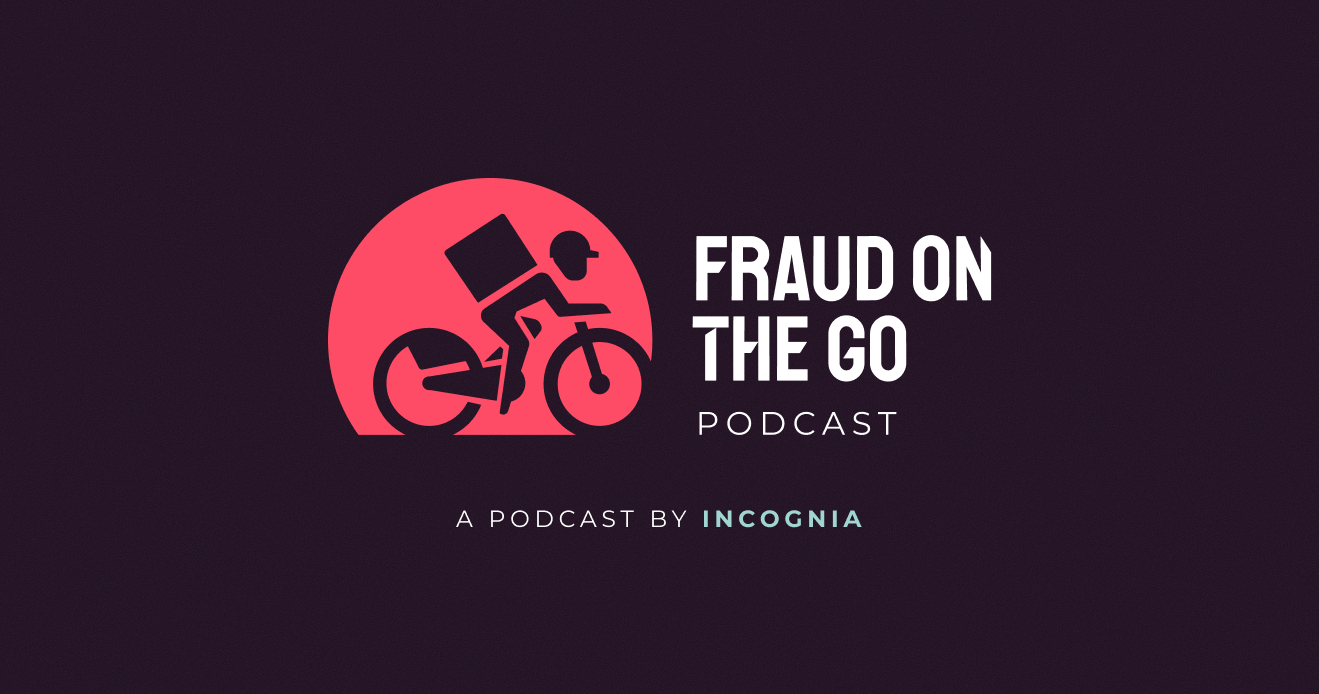- Blog
- Balancing Growth Tactics With Fraud Prevention: How to Protect Promo Campaigns From Abuse
Balancing Growth Tactics With Fraud Prevention: How to Protect Promo Campaigns From Abuse
Marketing campaigns are a crucial aspect of business growth, especially in the digital age where competition is fierce and consumer attention spans are short. Promotional offers, discounts, and free trials are commonly used tactics to attract new customers and retain existing ones. However, these campaigns can also be targeted by fraudsters who seek to exploit them for their own gain. Explore insights from industry experts about the best ways to balance your growth strategy with your fraud prevention efforts.
Subscribe to Incognia’s content
For those who prefer listening over reading, we've provided an audio transcription player below, allowing you to enjoy this post through your speakers or headphones.
Everybody likes a good deal, especially if it's for a good product. When marketing teams are brainstorming new growth strategies and ways to bring in new users and encourage conversion, sales and promo campaigns are often some of the best ways to sweeten the deal for new users.
As a user, maybe you're curious about a service, but not quite willing to pay full price just to try it out. If that platform can offer you 20 or even 50% off for your first purchase, that's a much more enticing way to dip your toes in.
As a marketing professional, you're counting on the idea that users will come for the discounts, and stay for the amazing product.
Promotional campaigns, discounts, new user bonuses, and referral bonuses are all thriving parts of a strong growth strategy, but unfortunately, they can also be prone to abuse by organized fraudsters.
A single user who makes one or two extra accounts for a waived delivery fee might seem like small potatoes, but organized fraudsters will make accounts by the hundreds to steal money from a platform's marketing budgets.
There's a way to have your promo campaign cake and eat it too, though. In a webinar with MRC called "Promo Abuse Exposed: Protecting Gig Economy and Delivery Apps," Incognia's Senior Account Executive Kyle Griffin talked with Jaanus Uudmäe of food delivery service Bolt and Vlad Branin of ride-sharing service Gett about some of the best ways to protect a gig platform from promotion abuse.
Prioritize reliable data and the ability to re-identify users
Having data you can rely on is step one of protecting a promotional campaign from fraudsters. Without reliable, tamper-resistant signals, you might not even realize how big your promo abuse problem is, and that can be a recipe for disaster—campaign budgets going down the drain while the marketing team blames themselves for "low retention" that was actually fraud from fake accounts.
Fake accounts, also known as multi-accounting, is how fraudsters make promo abuse work. Unlike the average user who might just use both their work and personal emails to claim a code twice, fraudsters will make dozens or hundreds of accounts to milk a campaign for all it's worth. Stopping multi-accounting attacks promo abuse at the root, and trustworthy, location-based device intelligence technology is how you stop multi-accounting.
Like Kyle explains it, “I think a lot of this comes down to the strength of your ability to re-identify a device and an account, because if you can confidently say, ‘Hey, I recognize who this person is, we've seen them before. They've already used this promotional coupon,’ then you can take the appropriate action to stop this from happening. So that's really important.”
Make sure someone is paying attention to the numbers
After you know that you can rely on your data, the next most important thing is to have someone actually monitoring that data and looking for signs of abuse. Not taking the threat of promo abuse seriously enough to monitor KPIs gives fraudsters a free ride under your radar.
As Bolt’s Jaanus pointed out in the MRC webinar, promo abuse isn’t like other types of fraud that target gig apps, such as refund abuse. With promo abuse, if you’re not noticing it yourself, nobody else is going to flag that data for you.
As Jaanus put it:
“The key is that first you need to have somebody looking at it…If you're talking about payment fraud where you have chargebacks, it's quite easy. You will get the bill from your payment service provider. You know exactly how many chargebacks you have, and then you know the size of the problem and you can deal with it. The problem with promotion abuse is that the fraudster is not going to come to you and say that ‘Oh, I got that promotion, and this is how much fraud is happening.’ So first you need to have somebody monitoring it, you need to have tools monitoring it.”
Make your promotions less attractive to organized fraudsters
Walking a tightrope between your growth strategy and your fraud prevention strategy is another way to limit promotion abuse. Fraudsters make money off of promo abuse by reselling the discounted product for a lesser discount than they got with the promotion—if they have a food delivery promo for 50% off, they might resell that same service to someone else for 30% off, and pocket the difference. At the scale of hundreds of accounts and promo codes, it can stack up to real money.
But the money has to be there for fraudsters to be interested. Organized fraudsters treat these multi-accounting schemes like a business, meaning they take their ROI into account. If the discounts or credits on offer don’t leave enough margin for fraudsters to resell them, they’ll go elsewhere in search of better deals.
That’s not to say that discounts shouldn’t be attractive to new users, though. According to Jaanus, at Bolt, he recommends a Goldilocks approach:
“If [fraudsters] only get 5% discount, it's not worth their time and effort. But if you offer, like I said, 50%, 70% off, then there is a margin for them to make a profit, so that matters as well. And this is why I'm trying to communicate with our campaign team, ‘Is that okay, can we do something in the middle crowd?’ Because yeah, obviously we want to give a good offer for a new customer as well, but maybe instead of giving 50% percent off the first order, [you do] five orders, 10 percent off each.”
Changing the structure of promo campaigns is one good way to make them less monetizable for promo abusers, which lessens their incentives to take advantage of a given campaign.
Have KPIs and acceptable loss thresholds in place
There’s no silver bullet for stopping all fraud, and trying to do so could backfire by resulting in false positives and too much friction for legitimate users.
Vlad Branin of Gett shared his perspective on campaign metrics:
“In this case, for example, in our rules, there is no marketing campaign that's going to be launched without consulting with the fraud team and the product team and setting up the particular KPIs and metrics for the campaign, especially about the level of fraud that we agree to accept.”
Collaboration and agreement between marketing and fraud prevention about acceptable fraud levels can help put guard rails on a campaign. That way, fraud prevention doesn’t hurt growth by introducing extra friction into the campaign, and marketing doesn’t accidentally donate a significant portion of their budget to enterprising fraud groups.
Maintain the ability to change or stop a campaign
In a worst case scenario, if it’s clear that a campaign has a widespread abuse problem, it’s important that your platform has the legal right to put the brakes on that campaign. It’s also a good idea to ensure that you have the right to deny promotion benefits to specific users—for instance, if you have reason to believe that a given user has already claimed that promo code on a different account.
To Vlad, not having an emergency stop button on a campaign is one of the red flags he sees from platforms.
“For me, it’s not having the ability to stop a campaign and the ability to control the amount of users or usage of your campaign. This is a big, big red flag.”
Jaanus made a similar point earlier in the webinar, saying:
“Make sure that you have talked to the legal team [about] terms and conditions in place, so if you run a promotion, you have a nice legal way to back out of it, and you can take away somebody's promotional code…People will not be happy about it, and they can complain, but at least then, your customer service can point them to these terms and conditions and say that, ‘Yes, we can do that, and we can stop the campaign at any point of time as well.’”
Like giving out a free sample in a grocery store, promo campaigns can be the perfect way to invite new users to try your product at little risk for themselves. When fraudsters get involved, though, what’s meant to be a something-for-something arrangement can quickly spiral into an all-for-one buffet. Keeping legal protections in place, encouraging collaboration between marketing and fraud teams, and prioritizing location-based device intelligence technology to stop multi-accounting are all excellent ways to protect your marketing campaigns from abuse.




